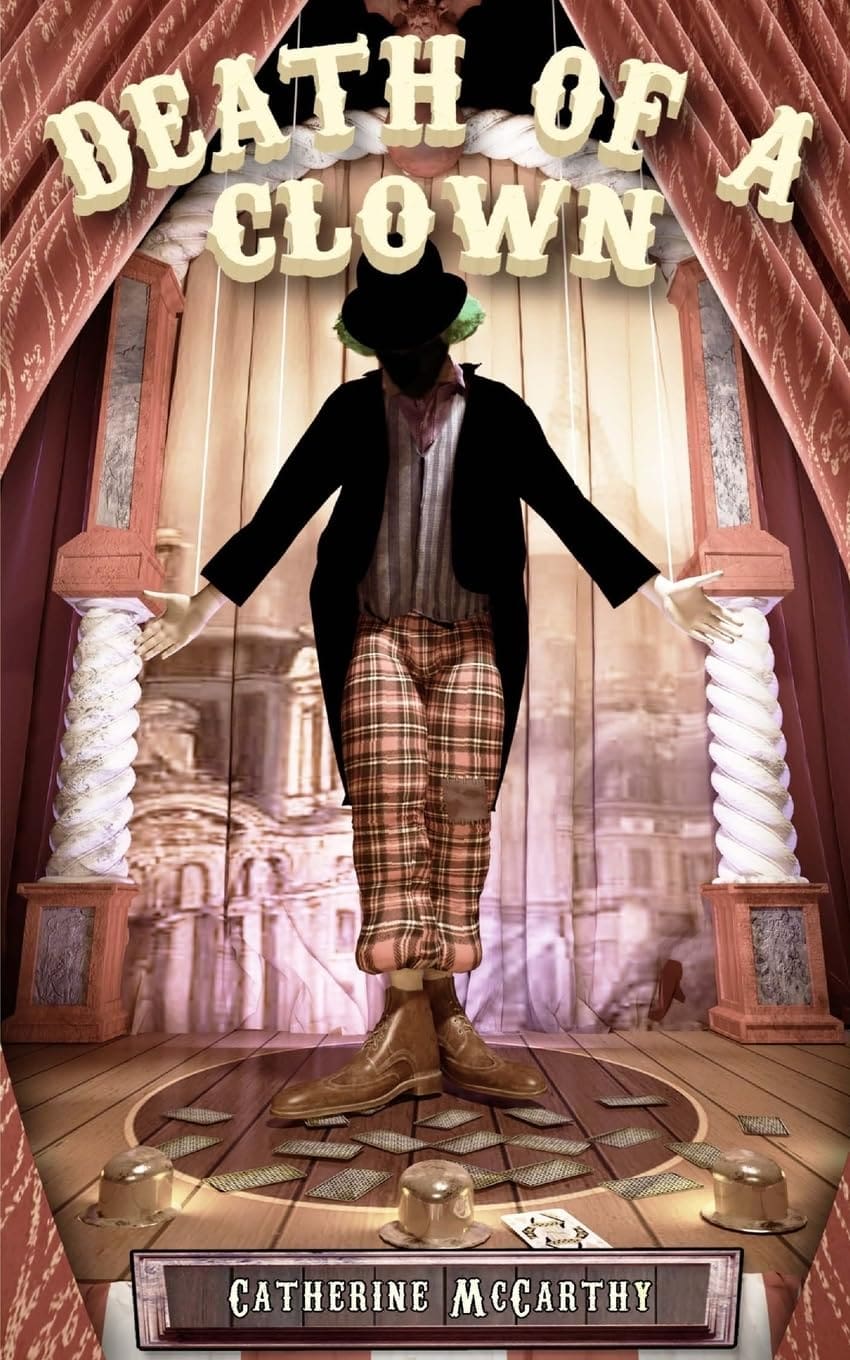
The joke’s on him…
Synopsis
Born and raised into the Sacred Order of Tragicomedy, Chester Brown’s path is written in stone. The bulbous nose and gigantic feet define him physically, while The Sacred Church of Razzmatazz ensnares him in its grip.
For Chester there can be no escape…or so he believes.
But Chester Brown has a secret passion―he longs to become a writer.
When a chance encounter leads him on an existential pilgrimage across Europe, a new world begins to surface.
Will Chester manage to erase the marks of the clown, or will the bonds of his past prove unbreakable?
Review
Welsh horror author Catherine McCarthy is always unpredictable. From cosmic folk horror to gothic horror to whatever puzzle box her last novel The Last House on Lacelean Street was, you never know what you’re going to get, but you can be sure it will throb with a vivid sense of atmosphere and a keen sense of humanity. But with Death of a Clown, out now from Sobelo Books, McCarthy has ventured from horror to literary dark fantasy. However, her horror fans need not fear: while the chills have gone, this is a gloriously imaginative triumph, maybe her crowning glory yet, and one that will only fail to move you if your heart has been replaced by a particularly obtuse brick.
The story concerns Chester Brown, a clown raised in a clown society and a clown quarter of an alternative London, destined to perform. Only problem is, he doesn’t want the life anymore—the performing, the humour, the culture—and seeks to start afresh. With the help of a mysterious journal he finds, he leaves his clown life behind on the journey of a lifetime to travel the cultural heart of Europe to try and see if he can really reshape his destiny or else be trapped by his origins.
As you can probably guess by my attempted plot summary there, this is a journey of self-discovery and freedom from an oppressive life that you no longer feel—or never really felt—truly a part of, and McCarthy is a perfect author for such a tale. Her language is clear yet wonderfully evocative and descriptive, and the constant dance between dark poignancy and warm hope that characterises much of her writing makes Chester a character you will root for and be fascinated by.
It’s the choice of this alternate world clown society that also sets this book apart. On the one hand, you might think the use of clown worldbuilding—the Sacred Church of Razzmatazz, the clown god Cholly, the Sacred Order of Tragicomedy, the Clown Quarter of London, next to the Magician’s Quarter—is at odds with a subtle, serious dark fantasy of self-discovery, and can only be played for laughs. But of course, as McCarthy explores in depth here, humour has always been allied with tragedy—as the term tragicomedy implies—and it’s McCarthy’s use of a humour-filled society rather than a dour one that aptly shows how it’s not the tone that’s important, it’s the sense of freedom from dogma or forced culture that matters. This clown society might be constantly laughing, but it’s a warped form of repressive humour, the opposite to true wit, and she smartly shows how even a society free from literally imprisoning you can feel like a prison of conformity.
It reminded me of the joke about a clown—stop me if you’ve almost certainly heard this one before—who goes to the doctor about his depression. “The great clown Grimaldi is in town tonight,” the doctor says, “Go and see him! That should sort you out.” The man bursts into tears. “But doctor,” he says, “I am Grimaldi.” Chester’s condition is Grimaldi’s and all the jokes in the world can’t free him from a life he doesn’t belong in.
Another clever move is that we see firsthand Chester’s attempts at a new career—writing—in the form of a selection of his stories that break up the main narrative. From the sinister—a repressive society where questions are banned unless you want your mouth to be stitched—to the poetic—a character discovers their father was a tree (I might have described that too matter-of-factly)—these reflect the themes of conformity, self expression, and rebirth that the book is about and also, rather wonderfully, reflect the changing emotions of Chester himself. As he starts to hope he can change and even hope he might find love, the tenor of the stories change, a subtle and wonderful narrative device.
As the second half of the book moves away from his prison to his journey, we our immersed in the culture and romance of the renaissance heart of Europe. Paris and Florence, those bastions of the arts, are evocatively described, and I felt as though as I was in some dream version of them, a gentle paradise of cultural possibility. McCarthy skips between artists real and imagined to paint the canvass of Chester’s self discovery, all the while seeding the intriguing mystery of who wrote the journal that has directed Chester’s journey and what his aims are. These are breathless, beautiful, wonderful chapters, with a compelling romance at the core, concerned with the joy of immersing yourself in a new world and culture and suggesting that, ultimately, the only person who can change yourself is you.
Overall, it’s impossible not to be deeply moved and inimitably inspired by the journey of self-discovery of Chester Brown the conflicted clown. McCarthy’s foray into literary dark fantasy has only reinforced her label as a rising star of British speculative fiction.









Leave a Reply